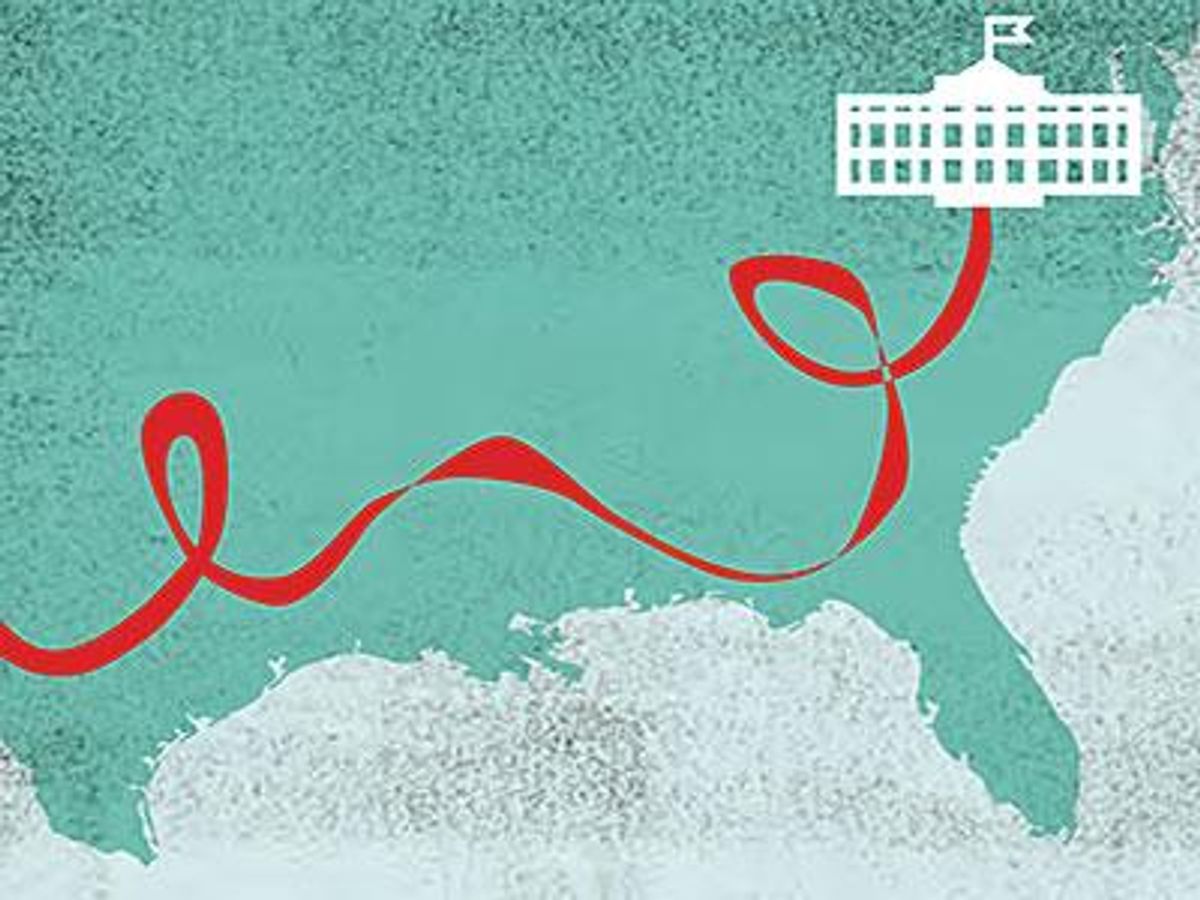As we consider HIV in our country, we find ourselves at the confluence of revolutionary scientific discoveries. We know that people living with HIV who are on antiretroviral treatment -- and virally suppressed -- substantially reduce the chance of transmission. We know that HIV-negative individuals can combine safer-sex practices with biomedical prophylaxis and significantly reduce their chances of contracting the virus. We know that accessing medical care and treatment immediately following exposure offers an opportunity to avoid infection.
Augmenting this knowledge are strong support for domestic HIV prevention, care and treatment; greater opportunities to access care and optimize health outcomes in large part because of the Affordable Care Act; and major advances for LGBT Americans, which President Obama has championed. This intersection of knowledge, interventions, and opportunities is helping to achieve the goals of the National HIV/AIDS Strategy: reducing new infections, improving access to care and optimizing health outcomes for people living with HIV, and reducing HIV-related health disparities. We have the tools to realize the president's vision, expressed in the strategy, that "the United States will become a place where new HIV infections are rare and, when they do occur, every person, regardless of age, gender, race/ethnicity, sexual orientation, gender identity, or socioeconomic circumstance, will have unfettered access to high-quality, life-extending care, free from stigma and discrimination."
And yet, even with the progress we have made, we still face some barriers that if not dismantled will prevent us from achieving that vision. While we have seen decreases among some populations, we continue to see rising HIV new infections among same-gender-loving men. Sixty-three percent of the approximately 50,000 new infections annually are among same-gender-loving men of all races and ethnicities, disproportionately among young gay men, especially blacks and Latinos.
We also see geographic disparities when we look toward the South. According to CDC data, nearly half of the 16 states in the Southern U.S. as well as the District of Columbia had higher- than-national-average estimated rates (per 100,000 population) of stage 3 (AIDS) classifications for persons with HIV in 2011. This means that people arrive to care late in disease progression, with immune systems damaged by opportunistic infections that can largely be prevented by initiation of early treatment. President Obama and his administration have prioritized these demographic and geographic hot spots, and the places where they intersect. Working with our partners throughout the Department of Health and Human Services, and across the federal government, we are building capacity to address disparities. For example, HHS is supporting a three-year, $44.2 million Care and Prevention in the United States (CAPUS) demonstration project with the goal of developing innovative approaches to reduce HIV- and AIDS-related morbidity and mortality among racial and ethnic minorities. This project focuses efforts on improving outcomes along the HIV care continuum, and six of the eight funded states are in the South.
At the Office of National AIDS Policy, we are working closely with the Rehabilitation Services Administration of the Department of Education and the National Working Positive Coalition, a group of people living with HIV, to explore opportunities for people living with HIV who feel well and desire to return to work. We are also following the recommendations of the HIV Care Continuum Initiative, such as tackling misconceptions, stigma, and discrimination to break down barriers. Earlier this year, the CDC launched the latest communication campaign under its Act Against AIDS initiative: "Start Talking. Stop HIV" -- aiming to eliminate stigma and discrimination and promote open communication between gay and bisexual men about a range of HIV prevention strategies. Additionally, the Department of Justice launched ADA.gov/AIDS, a portal to directly report cases of HIV-related discrimination.
Upon release of the strategy four years ago, President Obama reminded us that to achieve its goals, "government has to do its part. But our ability to combat HIV/AIDS doesn't rest on government alone." As we continue to address the disparities, all of us in the LGBT community can also do our part by continuing our legacy, one of banding together and bonding, working to achieve the greater good. We could use a good measure of that energy as we all work toward reaching for an AIDS-free generation.
Douglas M. Brooks is the director of the White House Office of National AIDS Policy.

















































































